Ruralite

Reduce, Reuse and Recycle
Carol Wennstrom spearheads new community recycling site
Page 4













Carol Wennstrom spearheads new community recycling site
Page 4











May 2025 • Volume 72, No. 5
CEO Michael Shepard
SENIOR VP OF CONTENT Leon Espinoza
EDITORIAL DIRECTOR Chasity Anderson, CCC
DEPUTY EDITORIAL DIRECTOR
Noble Sprayberry
SENIOR EDITOR Jennifer Paton, CCC
ASSISTANT EDITORS Victoria Hampton, CCC; David Herder, CCC; Sable Riley, CCC
ASSOCIATE EDITORS
Valeri Saldanha Rosa, Nina Todea
PUBLICATIONS PRODUCTION SR. MANAGER
Elizabeth Beatty
SENIOR PUBLICATIONS COORDINATOR
Alyssa McDougle
Ruralite (USPS 397-460) is published monthly for members for $5.43 per year, plus postage, by Pioneer Utility Resources Inc., 5625 NE Elam Young Parkway, Suite 100, Hillsboro, OR 97124—a not-for-profit Oregon cooperative corporation—to serve the communication needs of 46 consumer-owned electric utilities in Oregon, Washington, Alaska, Idaho, Nevada and California. Preferred periodical postage paid at Hillsboro, Oregon, 97123 and additional mailing offices. © 2025 Pioneer Utility Resources. All rights reserved. Reproduction in whole or in part without written permission is prohibited.
Postmaster: Send address changes to Ruralite, 5625 NE Elam Young Parkway, Suite 100, Hillsboro, OR 97124-6454
HOW TO CONTACT RURALITE
Subscription services:
Nonmember subscriptions $15 (U.S.) per year; $25 per year (foreign). Prepayment required. Allow 4-8 weeks for first issue. Be sure to identify which local edition you want to receive.
Address Changes:
Utility members, contact your local utility. Subscribers, call us at 503-357-2105, option 3, or email mailingdept@pioneer.coop.
Back issues:
Back issues and extra copies are $3. Prepayment required. Supply is limited. Be sure to identify edition, month and year. Call first if ordering back issues to check availability.
To contact Ruralite: Ruralite magazine is published by Pioneer Utility Resources, P.O. Box 1306, North Plains, OR 97133-1306; 503-357-2105; email: info@pioneer.coop. For more information, visit pioneer.coop.
DISPLAY ADVERTISING INQUIRIES
American MainStreet Publications
611 S. Congress Ave., Suite 504 Austin, TX 78704
800-626-1181 or 512-441-5200

For supplemental and interactive content, search @Ruralite on your favorite social
Time is a curious thing. We count it in seconds, minutes, years—yet its true value isn’t in its measurement but in how we fill it.
In this month’s issue, I was drawn to how our story subjects measure their moments. James Du Bois captures literal droplets of time in his Oregon Du Drops, preserving rainwater in delicate glass bulbs that mark weddings, births, memorials and more.

“It’s the closest thing to catching time in a bottle,” he tells us, creating physical mementos of fleeting moments.
Time takes on different dimensions for the ultramarathon runners featured in our McKenzie River Trail Run Spotlight feature. These remarkable athletes measure hours not by clock ticks but by miles conquered—testing physical limits while forming deep bonds with fellow runners and the natural world. What started as five men running 50 miles evolved into an event that sells out within 24 hours, drawing participants from 18 states and beyond.
Perhaps most poignant is Aaron Reed’s relationship with time. The ultrarunner and
musician faced the ultimate countdown when diagnosed with a brain tumor.
“If we don’t get it out immediately, you got maybe six weeks,” his doctor told him. Today, recovered and training again, Aaron views each day as a gift, noting a higher power gave him back his most precious resource: time.
As we move into May, I’m reminded we each have our own way of marking our days. For some, it’s through creative pursuits—capturing raindrops or photographing new life, as Dave LaBelle encourages in his column. For others, it might be pushing our physical boundaries or simply savoring a sweet moment inspired by one of our spring desserts.
However you choose to measure your moments, I hope you find inspiration in these pages to make them count.
Until next time, Chasity Anderson Editorial Director
Do you know someone who spends their time in a unique, interesting way? I’d love to learn more. You might see them showcased in an Up Close article later this year. Reach me at editor@pioneer.coop.
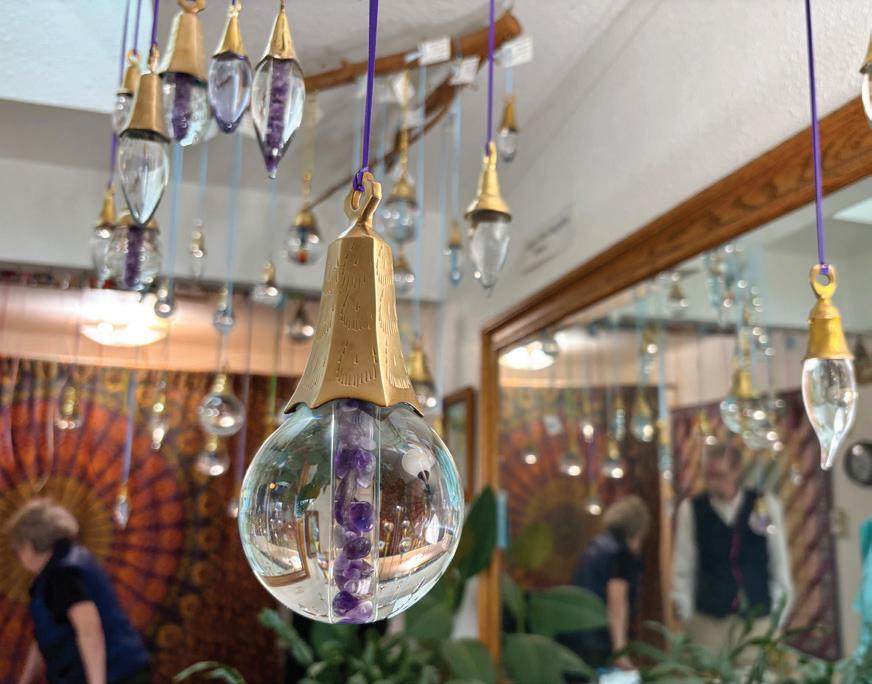
Oregon Du Drops are perfect for reflecting on life Up Close, Page 10
A world-renowned ultramarathon with a local mission Spotlight, Page 12
In The Kitchen, Page 16
Story and photos by Craig Reed
Carol Wennstrom gives residents in the Blachly and Triangle Lake areas another option to reduce, reuse and recycle.
In recent years those have become the three R’s of sustainable living. Carol has been a recycler for many years, and now she and several volunteers are on a mission to help people practice the three R’s.
Carol bought a cargo container and was given permission to place it on the side of the Lake Creek Rural Fire Protection District property in Blachly. A young local artist volunteered to paint a mural on it.
It is simply named Drop It.
Volunteers are on-site from 10 a.m. to 2 p.m. on Fridays and Saturdays. They accept clothing and magazines that can be reused or other items that can be driven to the best possible places for recycling rather than to the transfer station where they wouldn’t be reused or recycled.
“I don’t think everybody will use it, but I think a lot of people will,” says Carol, a 29-year resident of the Blachly area. “I’ll take the responsibility for hauling things to where they can be taken for recycling. We’ll use nonprofit stores and churches as well as specific transfer stations that do some recycling.”
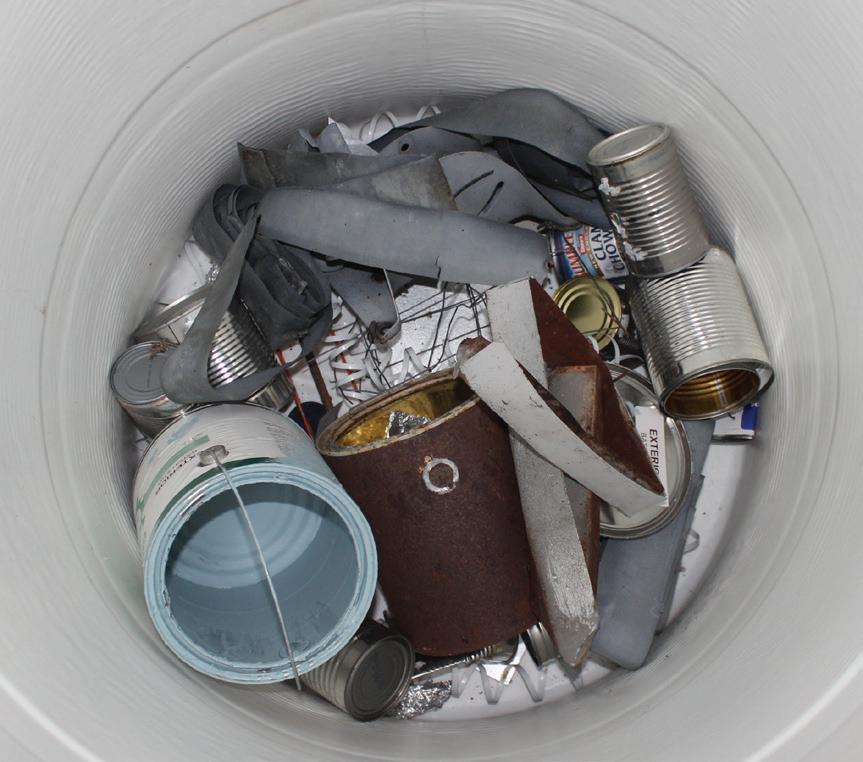
“I’m very optimistic that people will
use it,” says volunteer Cheryl K. Smith, a 28-year resident of the area.
Carol and Cheryl ticked off several items they hope to collect and divert from basic dumping, including Styrofoam blocks used in packaging, working and nonworking electronics, clothing, household goods, No. 4 and No. 5 plastics, plastic medicine bottles, canning jars, car batteries and fluorescent light bulbs.
Carol is also hoping people will drop off bottles and cans that she can return and receive some money to help with her fuel expenses.
“Over time, I expect the response from people will build up,” Cheryl says.
The two volunteers emphasized that
LEFT: Inside the cargo container, items are separated into barrels. BELOW: Recycling center volunteers work four-hour shifts on Friday and Saturday.
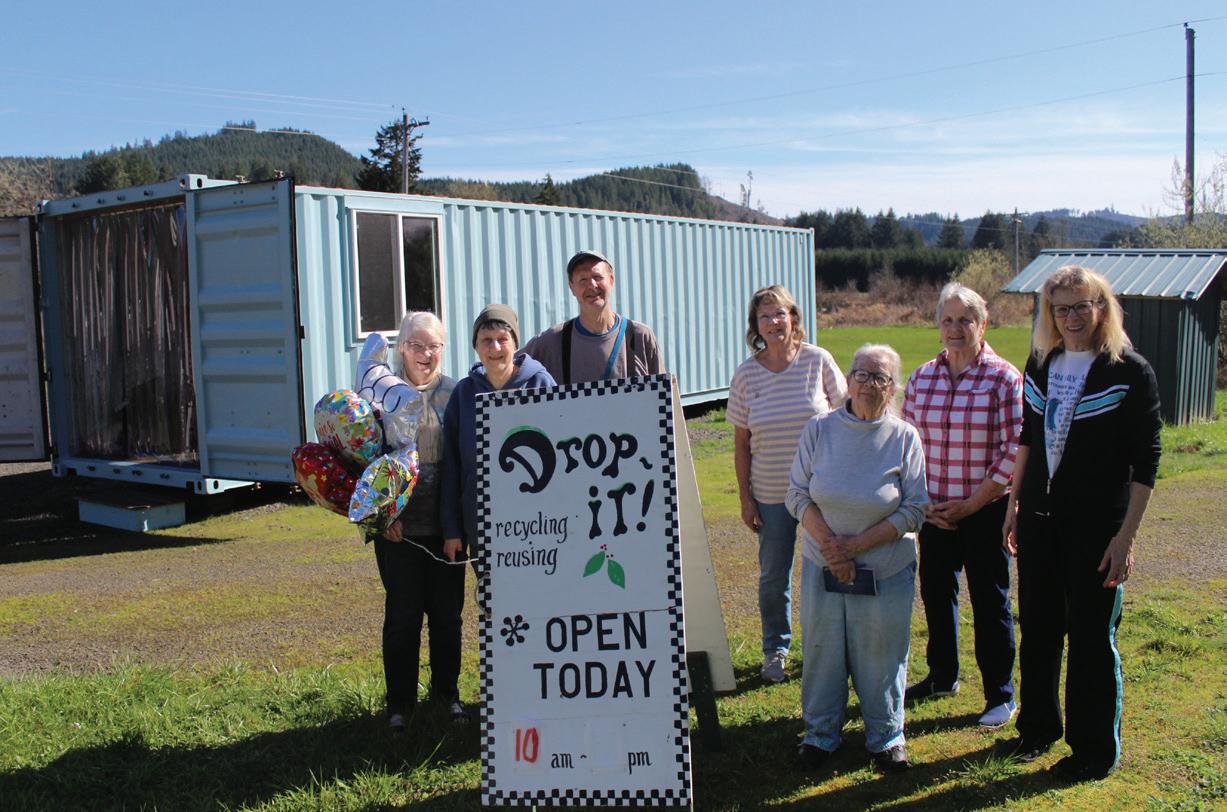
leaving items at the Drop It container when it is not open is a “big no-no.” There are security video cameras on the property that can be checked in case of wrongful drop-offs. The fire district allows the volunteer group to have the container on the property at no charge on the condition it does not become a trash dump.
Any questions on what is accepted can be answered by obtaining a waste disposal brochure at area post offices and stores or at the recycling site during open hours.
Carol discovered recycling in the early 1970s when she moved to Eugene. Prior to the ’70s, she recalls the only place that she and her Army veteran husband were based at that had a recycling program was Germany.
“Recycling wasn’t a thing then,” Carol says.
After moving to the Blachly area in the mid-1990s, Carol recycled what she could at the Low Pass transfer station. She also took a master recycler class.
When deciding to give Blachly and Triangle Lake residents the opportunity to recycle more items, Carol held a meeting to gauge interest.
“Twelve people showed up at that first meeting and that encouraged me to move forward with the idea,” she says. “I do understand a lot of people are passionate about it and others not so much.”
Carol knew she didn’t want to follow through on the recycling effort alone, so she asked for volunteers

and several people raised their hands. Those volunteers take turns manning the container during four-hour shifts on Friday and Saturday. Carol invites anybody else who is interested in volunteering to drop by the site during open hours and add their name to the list.
“We’re just a group of people who want to make recycling easier for the residents here,” she says. n

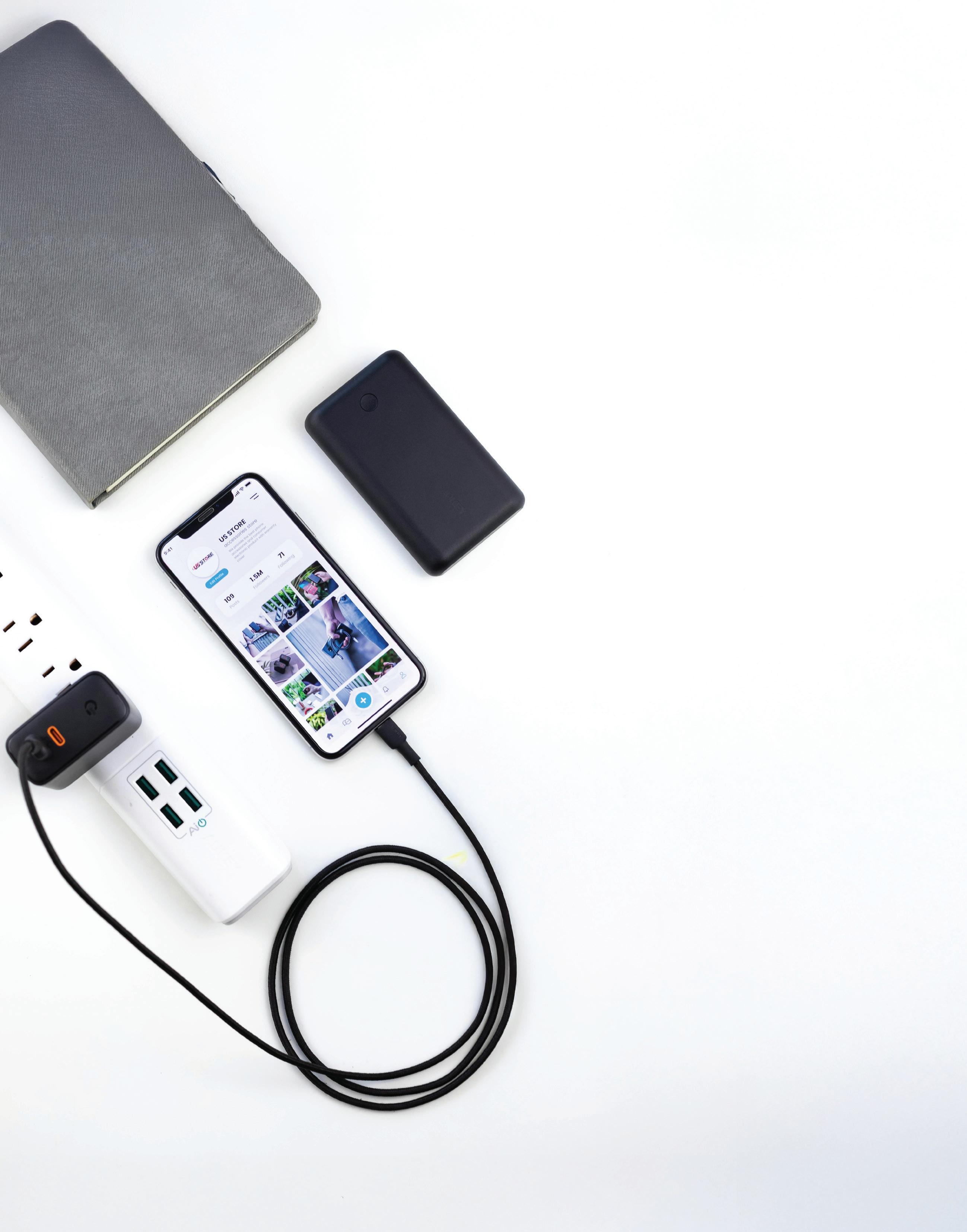
By Abby Berry and Nina Todea
Every May, Electrical Safety Month serves as a vital reminder of the importance of preventing electrical hazards at home. Electricity powers nearly every aspect of modern life, but if handled improperly, it can pose serious risks, including injuries and property damage.
Your electric utility understands the risks associated with improper electricity use, which is why we’re committed to reminding you to stay vigilant and practice electrical safety year-round.
By following key safety practices, you can reduce the risk of electrical hazards and ensure your family stays protected. Here are eight essential tips for powering up safely at home:
1. Be vigilant. Regularly inspect your home’s electrical system, including smoke alarms and carbon monoxide detectors, for signs of damage or outdated components.
Electrical fires can start silently and out of sight, making functional smoke alarms and carbon monoxide detectors essential for early detection. Test alarms monthly, replace batteries annually and ensure you have alarms installed in key areas of your home, including inside and outside of bedrooms.
2. Replace frayed electrical wires or cords. The Electrical Safety Foundation International estimates roughly 3,300 home fires originate from extension cords every year, primarily due to overloading, overheating or fraying. If you’re relying on extension cords as permanent power solutions, consider contacting a qualified electrician to install additional outlets where you need them.
3. Use surge protectors. Safeguard your sensitive electronics and appliances with surge protectors. These handy devices help divert excess voltage away from your electronics, reducing the risk of damage or electrical fires. Not all power strips include surge protection, so read the product label carefully. Additionally, surge protectors can lose effectiveness over time and should be replaced when damaged or outdated.
4. Practice safe use of power strips. Avoid overloading electrical outlets with power strips that exceed the outlet’s capacity. High-energy devices, such as heaters, microwaves and hair dryers, should be distributed across multiple outlets. Overloading an outlet with “busy” power strips can lead to overheating and create a fire hazard, so be sure to check the power strip’s wattage rating before plugging in items.
5. Don’t mix water and electricity. It may seem obvious, but accidents involving water contact with electrical items happen. Always keep electrical appliances and devices away from water sources, such as sinks, bathtubs or swimming pools. Make sure your hands are dry before touching any electrical switches or appliances. Never handle electrical devices with wet hands. Ground Fault Circuit Interrupters should be installed in areas where water and electricity are typically in proximity, including kitchens, bathrooms and outdoor outlets.
6. Hire a qualified electrician for major work. While DIY projects may seem like a tempting way to save money, working with electricity requires specialized knowledge of your home’s electrical system and national safety codes. Cutting corners can be a costly mistake beyond your wallet.
Recent data from the U.S. Consumer Product Safety Commission reports nearly 400 electrocutions in the United States each year, 14% of which are related to wiring hazards. A licensed electrician has the expertise to handle major electrical tasks, such as installing new wiring, upgrading your circuit breaker panel or troubleshooting electrical issues. When it comes to electricity, safety should always be your priority—leave the major jobs to the experts.
7. Educate family members. One of the best ways to ensure the safety of everyone in your household is to talk about electrical safety. Teach children not to play with electrical outlets or appliances, and ensure they understand the potential dangers of electricity. Create and practice a home fire escape plan that includes electrical safety precautions in the event of an emergency.
Practicing electrical safety at home is essential for protecting your family, property and peace of mind. Remember, electrical safety isn’t just a one-time effort—it’s a year-round responsibility. Taking these steps can help ensure a safer, more secure home for you and your loved ones. n
Homeowners should always take precautions to mitigate the risk of electrical fires and other electrical hazards—but what happens if those precautions are still subject to human error?
Faulty wiring, power surges or malfunctioning appliances can ignite flames in an instant. In those critical moments, knowing exactly what to do can mean the difference between safely containing an electrical fire and facing a devastating loss. Follow these guidelines if an electrical fire breaks out in your home:
Do cut the power: If a faulty appliance causes the fire, unplug it immediately. If you can’t reach the plug but have a safe path to your home’s breaker panel, turn off the electricity at the panel.
Do use a fire extinguisher: Not all fire extinguishers are created equal. Electrical fires should be extinguished with Class C fire extinguishers, which are specifically designed to address electrical fires. Fire extinguishers should only be used on small, contained fires. Electrical Safety Foundation International recommends homeowners buy a fire extinguisher large enough to effectively put out a small fire, but not so heavy that it is difficult to handle. In a pinch, small electrical fires can also be smothered with a fire blanket or baking soda.
Don’t use water: Although it may be your first instinct, water conducts electricity and can make the fire worse or cause electrocution.
Do evacuate immediately: If the fire spreads out of your control, get everyone out of the house and to safety, then call 911. Closing doors behind you can slow the spread of the fire.


By Abby Berry
Electric cooperatives stand out from other types of businesses because we are built and led by the communities we serve. As independent, not-for-profit electric utilities, we are owned and governed by our local members—not by outside shareholders or investors. That is a powerful differentiator.
Here are a few ways electric co-ops, such as Blachly-Lane, bring unique value to the local communities they serve:
• We put people before profits. Co-ops are not-for-profit and provide at-cost electric service. Any excess revenue is returned to our consumer-members in the form of capital credits.
• Community comes first. We live and work here, too, and we care deeply about our local communities. That’s why we sponsor local students for scholarships, give back to local schools, granges and other community projects, and help our neighbors in financial need pay their electric bills.
• Affordable, reliable power is our priority. Blachly-Lane buys electricity from PNGC Power, our wholesale energy partner.

PNGC is a generation and transmission cooperative formed by a group of electric co-ops in our region. This cooperative business structure allows us to pool local resources and provide electricity at a lower cost than if we bought it from outside sources.
We are focused on our members’ energy needs—not only for today but for the long haul. We’re advocating for smarter energy policies that prioritize reliability and affordability for all. We recognize we must be inclusive of all energy sources, which is why we work closely with PNGC to ensure use of a diverse mix of sources, primarily clean hydropower but including coal, natural gas, wind, and solar—to generate the electricity we provide to our members.
Blachly-Lane Electric Co-op is working to power a brighter future through innovation that meets tomorrow’s energy needs. Reliable, affordable electricity is more important than ever before, and our focus will continue to be the best interest of the local communities we serve.
To learn more about Blachly-Lane Electric Co-op, visit blachlylane.coop. n



































Minimum order of 5 coins
GENERATIONAL WEALTH is of paramount significance as it represents a beacon of financial stability. It serves as a tangibletestament to the hard work, diligence, and financial acumen of previous generations, offering a solid foundation upon which future generations can build their dreams and aspirations.
American Gold Reserve is releasing Government issued $5 Gold American Eagles completely free of dealer mark-up for only $339 each. These beautiful $5 Gold American Eagles are a perfect way to enter the gold market. They are set for immediate public release and will sell out fast
Free of dealer markup.

- 7 days a week
Protection against inflation and deflation. • Gold offers financial cover during geopolitical uncertainty. • Good portfolio diversifier.









By Vicki Hillhouse
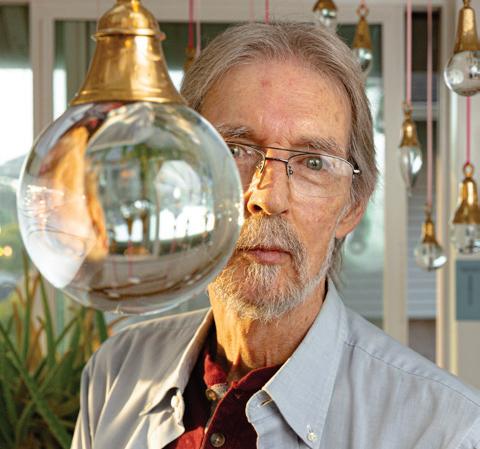
Inside a Rockaway Beach gallery off U.S. Highway 101, tiny water worlds dangle overhead. Delicate glass bulbs filled with Oregon rain and topped with brass temple bells hang like droplets suspended in time.
Artist James Stephen Du Bois— known to all simply as Du Bois— began making the bulbs for his own delight about 50 years ago. In 1999, after honing his creative process, he decided to fill them with Oregon rainwater and sell them as works of art. People occasionally asked if he had rain from a specific date. Soon, he was collecting and cataloging rain to customize his bulbs for birthdays, weddings, anniversaries and memorials.
“It’s the closest thing to catching time in a bottle,” Du Bois says. Most rewarding are the emotional bonds that tie his Oregon
Du Drops with the people who buy them.
“We call that nonmonetary compensation,” he says. “There’s such reward from touching people’s lives.”
On days he and his wife, Cathleen “Cat” Freshwater-Du Bois—both in their 70s— contemplate retirement, this is what drives him to continue.
“I like the idea that I’m making something for someone I don’t even know is going to come in,” he says. “When they do come in, and they see it, and it’s meaningful to them, then I know I’m doing something important.”

Oregon Du Drops date back to Du Bois’ 1970s college days at Indiana University. One early morning, he was walking in the woods when the rising sun illuminated a flowering bush blanketed in dew drop-covered spiderwebs.
“It was just the most interesting thing I’d ever seen,” Du Bois says. He stood captivated for the longest time, wanting to re-create
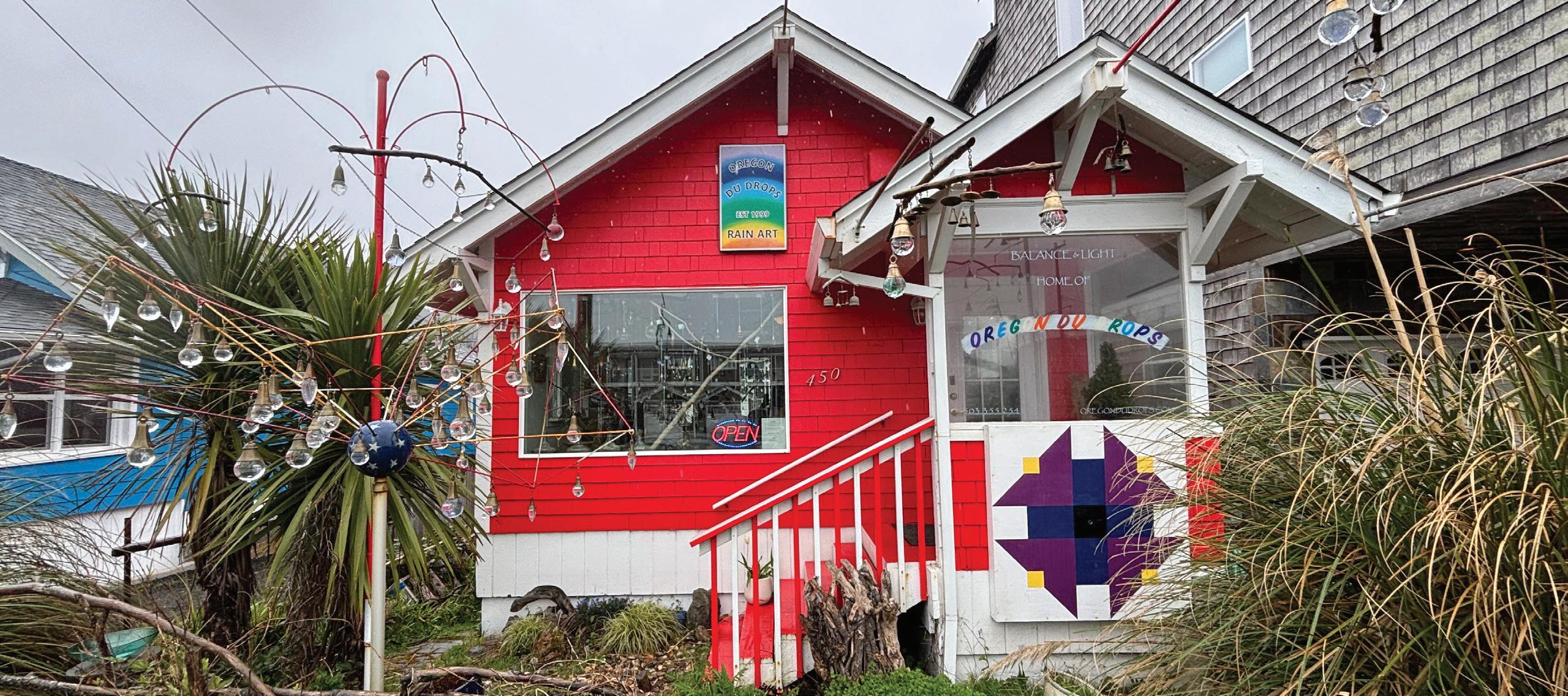


AND LEFT: Each drop made by Du Bois is suspended with ribbon corresponding to the month when the rainwater inside was collected. He gathers a gallon of water each month to fill the decorative bulbs, commemorating birthdays, anniversaries, deaths and other memorable dates.
the refraction and reflections. Once home, he dug out a spent light bulb, opened the metal with pliers, cleaned out the bulb and filled it with water.
“I was getting the same effect that I saw in the dew drops,” he says.
He started making them for his home, displaying them in windows, and sometimes adding plant cuttings. The exploding roots, though, robbed the reflective aspect—one of the first lessons of making Du Drops. Over the decades, Du Bois learned how to prevent the invasion of microorganisms in the bulbs with isopropyl alcohol and how to seal the orbs with adhesive.
“I played with them myself, about 25 years, just enjoying them,” he says. “A lot of people said along the way, ‘You ought to be sharing these with people.’ I never saw myself as an artist. I was just interested in what I was seeing.”
In 1999, while living in Springfield, Oregon, he began selling his drops at a Saturday market in Eugene. That year, Eugene experienced a 90-day drought, and Du Bois ran out of rainwater. Determined never to go without a water supply again, he now uses a dehumidifier to pull moisture from the air, collecting a gallon a month.
He met Cat in 2001 when he had a booth at Rockaway Beach’s Wine, Cheese and All That Jazz Festival, where she belted out tunes throughout the afternoon as a performer.
Cat enjoyed the Du Drops and set out to buy one filled with Valentine’s Day rain. Short on funds, she and Du Bois agreed to put the bulb on layaway. When they went to shake on the deal, Cat was so taken with the bespectacled artist that she kissed him instead.
“We’ve been together ever since,” she says.
They married a year later and eventually moved to Rockaway Beach.
Most customers discover Oregon Du Drops by driving past the couple’s home gallery. A metal mobile outside holds the drops, and passing motorists turn their cars around to check it out. Inside,
beams of light from the windows and skylight bounce off mirrors in sparkling resplendence.
The simplest bulb takes about eight days to make. Du Bois juggles several at a time in different stages of production. An icicle version can take three weeks as he shapes the glass with fire. Each drop hangs from a different color of ribbon depending on the month it was made.
Du Bois adds test tubes inside some bulbs and fills them with birthstones. He’s filled requests, too, to add cremated ashes inside. For such orders, he lights a candle as he makes the Du Drop and plays the favorite music of the person who died.
Cat engraves each Du Drop with dates, names or special messages.
“I wanted her hand on every Du Drop,” Du Bois says.
Cat also runs the gallery and serves as the voice on the phone, taking orders.
Shelves in the downstairs “rain cellar” are lined with 1-liter bottles. Demand for specific days has been relatively random. A recent customer requested a Du Drop from his October 1999 birth date. To Du Bois’ delight, that date was the starting point of his library.
Du Bois diligently updates the water catalog on his Oregon Du Drops website. The earliest years of collection don’t include specific dates. But recent years break down each day water was collected and whether it was dew or rain. Some supplies have been used up, such as the last four months of 2020.
For the time being, Du Bois is committed to continuing the business in one-year increments. He plans to keep making bulbs for Oregon Du Drops until at least 2026. He entertains the idea of making YouTube tutorials so others can make their own when he’s unable to do it. For now, he continues to touch lives with his watery wonders.
“That’s one of the nicest parts of the job—connecting with people’s lives,” he says. n
Oregon Du Drops is located at 450 U.S. Highway 101, Rockaway Beach, and can be found online at oregondudrops.com.

By Victoria Hampton
For nearly four decades, hundreds of runners have risen early to find their place behind the starting line of the McKenzie River Trail Run in Oregon. Instead of hitting the pavement, these athletes are getting off the beaten path. Along the 31-mile challenge are awe-inspiring waterfalls, an old growth forest and a lake so clear and blue it seems otherworldly.
These are just a few of the highlights that make the McKenzie River Trail Run a sought-after experience for ultrarunners.
“The physical beauty of the trail itself it unbelievable,” 73-year-old Race Director Tim Hooton says. “It rivals almost any scenic place.”
The event has tested runners’ strength and stamina along the Oregon trail for 38 years. The physical feat is paired with nature and camaraderie, some of the key differences that set ultramarathons apart from other competitions.
What started in the late ’80s with five men running 50 miles is now an annual 50K race that sells out in 24 hours, attracting runners from near and far.
“This year’s registration, we have people from 18 states and two foreign countries— New Zealand and Australia,” says Tim, who has been involved with the run for decades.
Ultramarathon runners push their physical limits while competing for top placement or simply crossing the finish line. The organizers behind these events dedicate their time to keeping participants coming back, all for the love of the sport.

Ultramarathons are characterized as anything longer than a 26.2-mile marathon. While 31-, 50- and 100-mile races are common, there are challenges of far greater distances.
While the races put runners to the ultimate test, UltraRunning Magazine
Editor Amy Clark says competitors find community and connectedness with smaller participant size and support along the trail.
“As ultrarunners, we understand that physical and mental breakdown of just trying to get through,” she says. “Most of the people who are drawn to this sport really care about each other. We want to see each other succeed.”
These events attract runners from all age ranges and walks of life. Race rosters list participants in their early 20s up to 80 years old.
Tim reflects on his lifetime of running, noting the increasing popularity of trail running since the late ’80s, which led to the growth of ultramarathons throughout the country.
The number of runners finishing ultramarathons in North America has steadily increased—with some dips when races were canceled during COVID-19 years 2020-2022—from 11,171 finishes in 1998 to 142,890 in 2024, according to UltraRunning Magazine.
Also on the rise is the number of female participants. In 2024, of the 2,949 ultraraces with 50 or more finishers in North America, female competitors won more than 51 ultramarathons.
“Our race is almost 50% women,” Tim says. “We’re talking women who can hang with the men and even kick butt. It has been fun to watch.”
While marathons attract thousands of competitors, ultramarathons typically draw fewer than 1,000. Many, such as the McKenzie River event, cap registration around a few hundred.
“The entire sport itself, it is so different from what I was used to with the running community,” Amy says.
Amy ran her first marathon in 2002 with the goal of eventually qualifying for the Boston Marathon. After having children, Amy returned to running marathons but found she didn’t have the same excitement for the experience. She decided to give ultrarunning a try at the McDonald Forest 50K in Corvallis, Oregon, in 2014.
“It was a completely different community and felt like a different sport than running on a road for 26 miles,” she says.
In a typical road-running experience, Amy’s goal was to run as fast as she could for as far as she could. In ultramarathons, she found people talking and encouraging each other between the eight check-in stations.
Along the route, volunteers are stationed to help runners get a quick snack, refill water bottles and attend to any medical needs.
“It’s a symbiotic relationship,” Amy says. “The volunteers, if they weren’t out there, it would be a lot harder. They are what help keep us going.”
Amy ran the McKenzie River Trail Run in 2015 and returns in June.
“That’s why I go out and run these races,” Amy says. “I love the scenery, experiencing it with other people and pushing yourself a little harder than another run.”
The McKenzie River Trail Run is about people over profit. When Tim became the race director in 2018, he had a vision to transform the one-day event into a vehicle for positive change in his rural community.
“I knew what I could do to expand it to have a greater impact,” he says.

The McKenzie River Trail Run became a nonprofit event seven years ago. Tim and event volunteers have expanded the number of annual participants. They find race sponsors and encourage racers to support local lodging, eateries, stores and services while in town.
The nonprofit donates race funds to community projects, including providing equipment for the local cross-country team, replacing freezers and storage shelves for the food pantry, repairing the roof at the community center and replacing gear for the volunteer fire department.
“We take great pride in our local community,” Tim says. “I cannot take the credit for all this stuff. I surround myself with people who are way smarter than me.”
Support is vital to the continuation of ultramarathons throughout the country.
The McKenzie River Trail Run has held onto its roots for four decades and continues to take new strides to support the rural community.
“To have what McKenzie River has—a dedicated race director, a dedicated community and a dedicated volunteer base—is a unique thing and should be celebrated,” Amy says. n
For more information about the McKenzie River Trail Run, visit mrtr.org.





“I didn’t realize anything was wrong until I had a seizure,” Aaron says.
By Victoria Hampton
As a runner and musician, Aaron Reed’s life revolves around keeping time. From pace to beat, he follows a rhythm of performance as he traverses trails and takes the stage.
In December 2024, time took on new meaning when Aaron collapsed during a routine gym workout. Suddenly, he was hanging in the balance between life and death.
He was facing an unexpected challenge— time running out. Yet, mental and physical strength, along with divine intervention, prepared Aaron for the fight of his life.
Going the Distance
Aaron, 42, has loved running since middle school. When he moved to Oregon in 2004, he ran along the state’s scenic trails and found a path to the ultrarunning community.
“I was always really into long runs and as I got older, got into running ultras,” Aaron says.
Aaron continues taking on challenges at longer distances and finds new trails to explore while touring and performing with his brother, Phil. Known as The Brothers

Reed, the duo takes the stage at intimate venues from Washington to Arizona, combining storytelling with original lyrics.
During a tour stop in Arizona, Aaron discovered the Cocodona 250, a 250-mile ultramarathon from Black Canyon City to Flagstaff through some of state’s most scenic landscape.
In May 2024, seven months before he collapsed in the gym, Aaron found himself relying on his mental strength to push his body through the challenge. He was 80 miles in when he sensed something was wrong. By mile 161, he suffered a stress fracture in his leg.
“I had to make the decision,” Aaron says. “I am going to finish. The only way I won’t is if I am taken out of the race.”

He walked the remaining 89 miles in 52 hours, completing the race in four days, eight hours, 16 minutes and 33 seconds.
While achieving some of his best performances, on the trail and stage, a bigger threat was growing inside him.
At the end of the year, following a series of tests at the hospital, Aaron was diagnosed with a brain tumor.
“It’s kind of interesting, because (the tumor) was in there … I was racing really hard,” he says. “I was doing really well in races, the music, just everything was going so well, and then this happened.”
Due to the severity of the tumor, the surgeon didn’t know if it was possible to remove it all or what type of life Aaron would have after surgery. He could lose his vision, his ability to speak or, in the worst case, his life could be cut short.
“If we don’t get it out immediately, you got maybe six weeks,” Aaron recounts the doctor’s prognosis. “How long if I get it out? Thirteen months.”
Aaron’s wife, Becca, says time seemed to move backward as she stood next to her husband in a hospital bed and tried to process the news.
“I felt like things were going slow but incredibly fast,” she says. “The neurosurgeon came in, and it felt like this weird time warp of slow motion and super quick all at the same time.”
As a nurse, Becca helps people through some of the worst times in their lives. Yet, knowing her husband was facing a lifethreatening diagnosis was different.
“Nothing can prepare you for it,” she says. “It just absolutely floored me.”
Becca kept replaying the morning before Aaron’s seizure in her mind. They were drinking coffee together and planning the weekend. She savored the last moments of normalcy as she came to terms with the fact that if her husband survived, his life may never be the same.
As Aaron awaited surgery, Becca and Phil huddled with him on his hospital bed, shedding tears and holding on to the person they loved in his toughest moment. Aaron says a calm washed over him as he drifted into a deep sleep.
That is when he heard a voice. From somewhere unexplained and unsolicited, Aaron experienced a moment of divine intervention, offering him protection and peace of mind.
“God just literally put me to sleep,” Aaron says. “As soon as he put me to sleep, he said, ‘You’re gonna be OK.’ I just came out of it knowing I was going to be OK.”
Eight days after Aaron’s seizure, doctors successfully removed his tumor. Now, everyone waited to see what would remain of Aaron’s abilities when he woke up.
Shortly after finding out Aaron was awake, the doctor returned to his family with an update.
“He came storming back in and said, ‘He’s awake,’” Aaron says. “‘He knows his name. He knows where he’s at. He knows where he’s from. He just said the Packers game is on in 45 minutes. He’s talking.’”

On Christmas Day, just two days after surgery, Aaron was released from the hospital. He was back on a stationary bike seven days later. Since then, he’s started racing again in preparation for ultramarathons this summer.
Aaron’s pathology tests continue to show improvements.
“I know this isn’t going to be the thing I die from,” he says.
In June, Aaron, Becca and Phil are joining the McKenzie River Trail Run, an ultramarathon coordinated by their friend, Tim Hooton.
“Tim is one of my soul friends,” Aaron says. “It’s cool to get to be there and get to do this thing he puts so much work in.”
During race weekend, Aaron and Becca will commemorate their 10 years of marriage with a vow renewal.
“McKenzie River has always been a really special place for us,” Becca says. “There’s something magical in that area. The forest and that river, you feel like you’re so far

away. There’s barely any cell service. It’s just a time to disconnect from the craziness of the world, and it just feels really peaceful and serene and quiet.”
While the worst is behind Aaron, building his mental stamina is just as much a part of his daily life as his physical fitness. Aaron writes in a journal, meditates twice a day and eats healthy. His practices include writing on paper five things he’s grateful for each day and placing the list in a jar.
“It seems to do quite a bit, especially if you’re one of those people who tends to gravitate towards the gloom and doom,” Aaron says. “I always have believed that the mind is super powerful.”
Yet, he doesn’t give himself credit for his miraculous recovery. Aaron believes a higher power gave him back his most precious resource: time.
“I didn’t have to tell myself it was OK,” Aaron says. “God literally came to me uninfluenced and just told me I would be OK.” n
To listen to Aaron and Phil’s music, visit thebrothersreed.com.
Strawberry Trifle
1 cup whole milk
1 cup sour cream
3.4-ounce package instant vanilla pudding mix
1 teaspoon grated orange zest
Recipes by Gertrude Treadaway
ADOBE AI ILLUSTRATION BY
SASHAMAGIC

2 cups heavy whipping cream, whipped
8 cups cubed angel food cake
4 cups sliced fresh strawberries
Additional sweetened whipped cream for topping
In a large bowl, beat the milk, sour cream, pudding mix and orange zest on low speed until thickened. Fold in whipped cream.
Place half the cake cubes in a 3-quart glass bowl. Arrange a third of the strawberries around the side of bowl and over the cake. Top with half the pudding mixture. Repeat layers once. Top with remaining berries. Refrigerate for 2 hours. Top with additional sweetened whipped cream just before serving.
1/2 cup maraschino cherries
2 31/2-ounce packages instant pistachio pudding mix
24 ounces whipped topping
20-ounce can crushed pineapple, undrained
2 cups chopped walnuts
1 pound mini marshmallows
Chop the cherries into quarters, but reserve a few whole cherries.
Combine pudding mix with whipped topping and pineapple. Add walnuts, chopped cherries and marshmallows. Combine well.
Refrigerate for at least 2 hours. Garnish with whole cherries on top before serving.
Almond Cheesecake
Crust
11/4 cups crushed vanilla wafers (about 40 wafers)
1/4 cup sugar
Filling
4 8-ounce packages cream cheese, softened
11/4 cups sugar
Topping
2 cups sour cream
1/4 cup sugar
1 teaspoon vanilla extract
Heat oven to 350 F.
3/4 cup finely chopped almonds
1/3 cup salted butter, melted
4 extra-large eggs, room temperature, lightly beaten
2 teaspoons almond extract
1 teaspoon vanilla extract
1/8 cup toasted sliced almonds
In a bowl, combine the wafer crumbs, sugar and almonds. Stir in the butter, and mix well. Press into the bottom of a greased 10-inch springform pan. Set aside.
To make the filling, beat cream cheese and sugar in a large bowl until smooth. Add eggs. Beat on low speed just until combined. Stir in extracts. Pour into crust. Place on a baking sheet.
Bake for 50 to 55 minutes or until center is almost set. Remove from the oven. Let stand for 5 minutes, but leave the oven on.
To make the topping, combine the sour cream, sugar and vanilla. Spoon the mixture around the edge of cheesecake. Carefully spread over filling. Bake 5 minutes longer. Cool on a wire rack for 10 minutes. Carefully run a knife around the edge of the pan to loosen. Cool for 1 hour before refrigerating overnight.
Just before serving, sprinkle with almonds. Remove side of pan. Refrigerate leftovers.
2/3 cup sugar
2 tablespoons cornstarch
Dash of salt
3 extra-large egg yolks
2/3 cup whole milk
1/2 cup lemon juice
2 teaspoons grated lemon zest
1 cup heavy whipping cream, plus more for topping
Lemon slices
In a small saucepan, mix sugar, cornstarch and salt. Whisk in egg yolks and milk until smooth. Whisk in lemon juice until blended. Bring to a boil over medium heat, stirring constantly. Cook and stir until thickened slightly, about 2 minutes longer. Stir in lemon zest.
Transfer mixture to a bowl. Cover and refrigerate until cold.
Once cold, beat whipping cream in a small bowl on high speed until soft peaks form. Fold into lemon mixture. Spoon into serving dishes. Top with additional whipped cream and lemon slices.
2 cups crushed pretzels
3/4 cup butter, melted
Filling
2 cups whipped topping
1 cup sugar
Topping
2 3-ounce packages
strawberry gelatin
2 cups boiling water
Heat oven to 350 F.
3 tablespoons sugar
8-ounce package cream cheese, softened
2 16-ounce packages frozen sweetened sliced strawberries, thawed
Additional whipped topping and pretzels
In a bowl, combine the pretzels, butter and sugar. Press into an ungreased 9-by-13-inch baking dish. Bake for 10 minutes. Cool on a wire rack.
To make the filling, beat whipped topping, sugar and cream cheese in a small bowl until smooth. Spread over pretzel crust. Refrigerate until chilled.
To make the topping, dissolve gelatin in boiling water in a large bowl. Stir in sweetened strawberries. Refrigerate until partially set. Carefully spoon over filling. Refrigerate until firm, about 4 to 6 hours. Cut into squares. Serve with additional whipped topping and pretzels.
My wife, Stephanie, is an avid gardener. She has only been doing it for a couple of years now, but she has more than 300 dahlia plants and rows of wildflowers and vegetables. She would love it if you would send her pictures of your garden or flowers and give each other hints/tips. She has spent every month for the past 15 years responding to this magazine and writing birthday wishes, recipes, etc. It really fills her bucket. It would be great if she could receive the same. Thanks.
Joe Randall
24753 Vaughn Road Veneta, OR 97487
I worked with a lovely lady named Jamie from Hermiston, Oregon, this corn harvest. During the season, she slipped and fell onto an extremely fast conveyor belt while unloading corn from a truck’s hopper and experienced severe injuries. She has not been able to work or do many of her favorite activities in recent months. Shopping for vintage marbles and paperweights at antique stores and yard sales is her favorite thing to do, but that's been a challenge lately since she doesn’t have the income she used to. She hasn’t been able to make any of her epoxy river charcuterie boards, cutting boards or river tables. She does very beautiful work. I wanted to see if any readers could donate vintage marbles and paperweights to her during this time. Please send to Jamie, P.O. Box 547, Irrigon, OR 97844 Anonymous friend of Jamie Hermiston, Oregon
My grandson and I just finished building a “marble run” which takes up half of the workshop. We only have a handful of marbles and need more. Instead of going to the store to buy some I thought I would try here first. Who has some marbles laying around? They can be “boulders” and “steelies.” Thank you very much.
K. Johnson 55271 Suba Road Coquille, OR 97423
My mother-in-law will be 96 this month. She lives in a care home and would love to receive birthday wishes. Please mail to Lillian McClimans, Silver Spring Personal Care Home, 125 State Road #4, Mechanicsburg, PA 17050. Thank you.
Pamela McClimans
Lebanon, Oregon
Our mom, Jo, turns 93 this month. She grew up in Bellingham, WA. She was the lead in “You Can’t Take It With You” in high school and was Worthy Advisor in Rainbow Girls. She moved with our dad during his Navy years, and settled in Southeastern Washington to raise a family. Dad paved roads all over Montana, Idaho and Oregon. Mom made a home for us wherever his work took us. Dad is gone, after 70 years of marriage. Mom enjoys doing crosswords, Sudokus, texting her grandchilden, and watching old episodes of “Matlock,” “ The Andy Griffith Show” and “The Lawrence Welk Show.” She is an avid follower of Gonzaga basketball. Please consider sending “Jo” a birthday card. Thank you. Send to Jo c/o Karen Walton, 2644 Harris Ave., Richland, WA 99354.
Karen Walton Richland, Washington
Our mom will be 97 this month. She is a wonderful mom and a very strong lady. She has been adjusting to assisted living in Oregon. She lived in Yuma for about 20 years on her own. She loves mail. She has had quite a diverse life. Rancher, logger, commercial fisherman, miner, and wife, mother, grandma, great-grandma and great-great-grandma. She loved to travel and play games. Please send to Grande Ronde Retirement, Verna Oliver, 1809 Gekeler Lane #104, LaGrande, OR 97850.
Susan Mascal Baker City, Oregon
My mom turns 89 years old this month. Although a strong woman of faith, the last 21/2 years have been a roller coaster. She went into assisted living, and my mom and dad celebrated their 70th wedding anniversary. Sadly, Dad died two months later. Two great-grandchildren died; two others were born healthy. A granddaughter married and Mom’s dearest sister died. Mom loves to receive mail and would be delighted to hear from people across the country. Please send to Phyllis Crist, 1651 NE 108th Ave., Portland, OR 97220.
Debbie Larson Vernonia, Oregon
Send your request—with no attachments—to readerexchange@ruralite.org or mail to Reader Exchange, 5625 NE Elam Young Parkway, Suite 100, Hillsboro, OR 97124. Fill in the subject line with Reader Exchange. Acceptance, scheduling and editing are at the editor’s discretion. Single requests only, please. No duplicates.
Submissions are handled on a first-come, first-served basis and as space allows. We cannot honor every request.
Please affirm you have authorization from all appropriate parties before submitting. By submitting, you indemnify Reader Exchange, Pioneer Utility Resources Inc., its officers, directors, employees, utility clients and insurers from all legal liability incurred by the publication of information.
We no longer accept pen pal requests. You may submit a pen pal request as a Marketplace ad. Marketplace pricing applies.
When submitting a milestone request, please send it at least two months before the milestone.
Phone numbers will not be published. Email addresses will be published if part of the ad, but the request must include a postal address.
Request must include the name and address of the electric utility that provides your magazine.

It is time to share your favorite photos for a chance to appear in our 2026 Ruralite calendar. Up to 13 winners will be selected and receive $100. Photos must be submitted by June 30, 2025. The contest is open to recipients of Ruralite and Currents magazines. Each person may only submit up to two photos. Each submission must include:
• Photographer’s name, address and electric utility.
• A short description of what is shown.
• Photographer’s email address and phone number.
• JPEG file photos only. Photos must be horizontal or landscape format and at least 300 dpi at 11 inches wide by 9 inches tall. Vertical photos and files larger than 30 MB will not be accepted. Enter today by visiting tinyurl.com/ruralitecalendar or use the provided QR code on this page.
Winning Tips
• Use the highest resolution setting on your camera.
• Photograph beautiful places and wildlife.
• Capture scenes full of vivid color.
• Reflect the seasons.
• Make us feel something—awe, joy, etc.
For more information, visit ruralite.com/2026contest.
BY

People don’t always do what their doctor says, but when seasoned veteran emergency room physician, Dr. Philip B. Howren, says every senior should have a medical alert device, you better listen up.
“Seniors are just one fall away from being put in a nursing home,” Dr. Howren said. “With a medical alert device, seniors are never alone. So it keeps them living independently in their own home. That’s why seniors and their family members are snapping up a sleek new medical alert device that comes with no monthly bills ever,” he said.
Many seniors refuse to wear old style help buttons because they make them look old. But even worse, those medical alert sys -
tems come with monthly bills.
To solve these problems
Universal Physicians, a U.S. company went to work to develop a new, modern, state-of-the-art medical alert device. It’s called “FastHelp™” and it instantly connects you to free unlimited nationwide help everywhere cell service is available with no contracts, no deposits and no monthly bills ever.
“This slick new little device is designed to look like the pagers doctors wear every day. Seniors love them because it actually makes them look important, not old,” Dr. Howren said.
FastHelp is expected to hit store shelves later this year. But special newspaper promotional giveaways are slated for seniors in select areas. ■
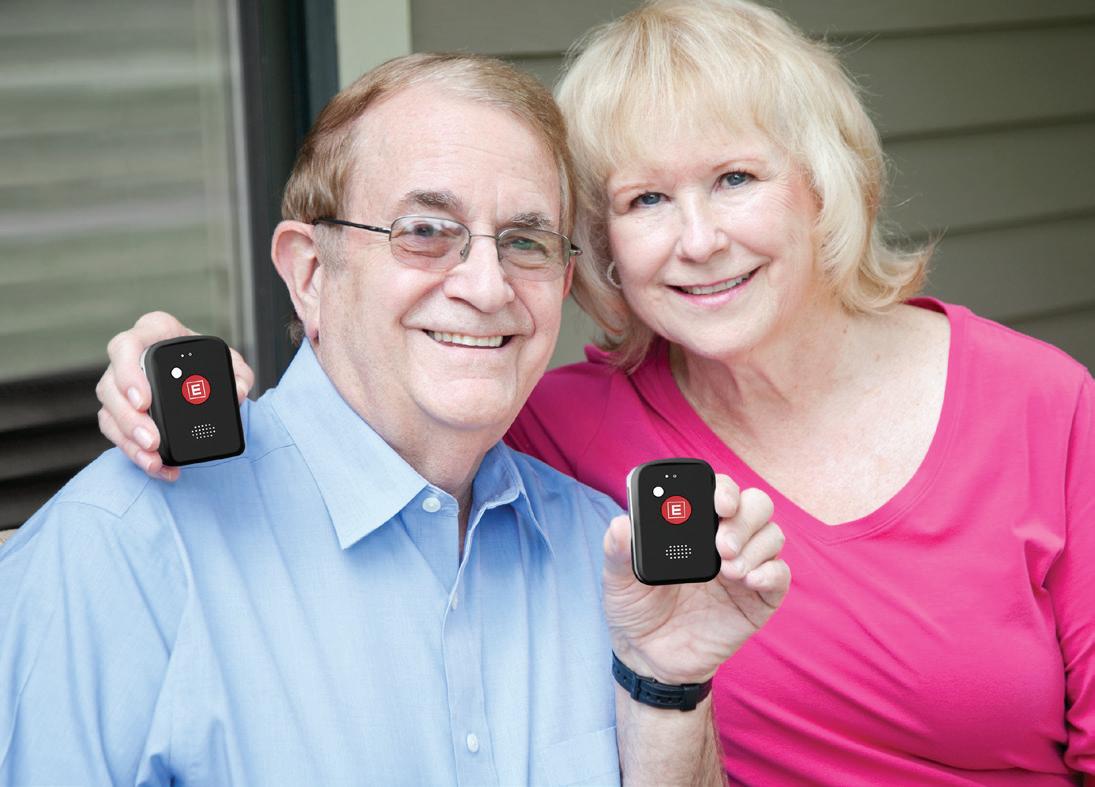
■ NO MONTHLY BILLS: “My wife had an old style help button that came with hefty bills every month and she was embarrassed to wear it because it made her look old,” said Frank McDonald, Canton, Ohio. “Now, we both have FastHelp™, the sleek new medical alert device that our grandkids say makes us look ‘cool’ not old,” he said. With FastHelp, seniors never have to worry about being alone and the best part is there are no monthly bills ever.
It’s just what seniors have been waiting for; a sleek new medical alert device with no contracts, no deposits and no monthly bills that instantly connects you to free unlimited nationwide help with just the push of a button for a one-time $149 price tag that’s a real steal after today’s instant rebate
The phone lines are ringing off the hook.
That’s because for seniors born before 1961, it’s a deal too good to pass up.
Starting at precisely 8:30am this morning the Pre-Store Release begins for the sleek new medical alert device that comes with the exclusive FastHelp™ One-Touch E 911 Button that instantly connects you to unlimited nationwide help everywhere cell service is available with no contracts, no deposits and no monthly bills ever.
“It’s not like old style monitored help buttons that make you talk to a call center and only work when you’re at home and come with hefty bills every month. FastHelp comes with state-of-theart cellular embedded
(Continued on next page)

■ FLYING OUT THE DOOR: Trucks are being loaded with the new medical alert devices called FastHelp. They are now being delivered to lucky seniors who call the National Rebate Center Hotline at 1-800-330-4294 DEPT. HELP8533 today. Everyone is calling to get FastHelp, the sleek new medical alert device because it instantly connects you to unlimited nationwide help everywhere cell service is available with no contracts, no deposits and no monthly bills ever.
(Continued from
page) technology. That means it works at home or anywhere, any time cell service is available whether you’re out watering the garden, driving in a car, at church or even hundreds of miles away on a tour or at a casino. You are never alone. With just a single push of the One-Touch E Button you instantly get connected to free unlimited help nationwide with no monthly bills ever,” said Jack Lawrence, Executive Director of Product Development for U.S. based Universal Physicians.
“We’ve never seen anything like it. Consumers absolutely love the sleek new modern design and most of all, the instant rebate that practically pays for it and no monthly bills ever,” Lawrence said.
FastHelp is the sleek new medical alert device with the best of combinations: a quality, high-tech engineered device that’s also an extremely great value because there are no monthly bills ever.
Better still, it comes with no contracts, no deposits and no monthly bills ever – which makes FastHelp a great choice for seniors, students and professionals because it connects to one of the largest nationwide networks everywhere cell service is available for free.
And here’s the best part. All those who already have an old style monitored medical alert button can immediately eliminate those monthly bills, which is why Universal Physicians is widely advertising this announcement nationwide.
“So if you’ve ever felt a medical alert device was too complicated or expensive, you’ll want to get FastHelp, the sleek new medical alert device with no monthly bills,” said Lawrence.
The medical alert device slugfest was dominated by two main combatants who both offer old style monitored help buttons that come with a hefty bill every month. But now
Universal Physicians, the U.S. based heavyweight, just delivered a knockout blow sending the top rated contenders to the mat with the unveiling of FastHelp. It’s the sleek new cellular embedded medical alert device that cuts out the middleman by instantly connecting you directly to highly trained 911 operators all across the U.S. There’s absolutely nothing to hook-up or install. You don’t need a land line and
you don’t need a cell phone. Everything is done for you.
“FastHelp is a state of the art medical alert device designed to make you look important, not old. Old style monitored help buttons you wear around your neck, or require expensive base station equipment or a landline are the equivalent of a horse and buggy,” Lawrence says. “It’s just outdated.”
Millions of seniors fall every year and spend hours lying on the floor helpless

and all alone with no help.
But seniors who fall and get immediate help are much more likely to avoid getting sent to a nursing home and get to STAY living in their own home independently.
Yet millions of seniors are still risking their safety by not having a medical alert device. That’s because seniors just can’t afford to pay the monthly bills that come with old style medical alert devices.
That’s why seniors born
before 1961 are rushing to cash in the whopping $150 instant rebate before the 21 day deadline ends.
So there’s no need to wait for FastHelp to hit store shelves later this year because seniors born before 1961 can get it now just by using the $150 instant rebate coupon printed in today’s newspaper before the 21 day deadline ends. If lines are busy keep trying, all calls will be answered. ■
1961: Use the rebate coupon below and call this Toll-Free Hotline: 1-800-330-4294 DEPT.
IF BORN AFTER 1961: You cannot use the rebate coupon below and must pay $299 Call: 1-800-330-9423 DEPT. HELP8533
THE BOTTOM LINE: You don’t need to shop around. We’ve done all the leg work, this deal is too good to pass up. FastHelp with the instant rebate is a real steal at just $149 and shipping and there are no monthly bills ever.
PROS: It’s the sleek new medical alert device that comes with the exclusive FastHelp One-Touch E 911 Button that instantly connects you to free unlimited nationwide help everywhere cell service is available with no contracts or deposits. It connects you to the vast available network of cellular towers for free and saves seniors a ton of money because there are no monthly bills ever making this deal irresistible. Plus it’s the only medical alert device that makes seniors look important, not old.
CONS: Consumers can’t get FastHelp in stores until later this year. That’s why it’s so important for seniors born before 1961 to call the National Rebate Center Hotline within the next 21 days. For those who miss that deadline, the sleek little medical alert device will set you back over $300 bucks.










By Dave LaBelle
I must have been 10 or 11 years old the day my mother drove 10 miles, took me out of my junior high class and rushed me home so I could watch my cat have kittens. Recognizing education comes in many packages, she figured me witnessing a cat giving birth was as valuable as what I might miss in the classroom that day. I didn’t have a camera yet, or I am sure I would have photographed the educational event. However, in the decades following, I photographed numerous animal and human births. Watching new life enter our world never gets old.
I like to think I’m a positive guy who usually doesn’t allow the hard things in life to get me down and to embrace the biblical admonition of focusing on things that are good and lovely. However, sometimes I can slip into dark moods. After all, a person can take only so much lying, cheating, posturing, stealing and killing. Watching animals in person or online, especially parents caring for their newborns, helps push away those poisons.
I was in a melancholy mood this past week, troubled too deeply about the state of our country, until a video of a baby elephant snuggling humans tickled me. It felt good to laugh. And then I watched rare footage shot from the mouth of a mountain lion den as a mother played with her kittens. Finally, I became engrossed with a livestream of bald eagles hatching eggs at California’s Big Bear Lake.
This is the time of year a lot of creatures give birth. Explore to see if you can find a spot to observe new life entering the world. This might be a nest near a lake or in a backyard tree. Perhaps you know where there’s an active fox den or a large hole in a tree where raccoons or squirrels have chosen to bring their young into the world.
Without disturbing, see if you can capture new life and the behavior as the offspring ventures into the world. I can’t wait to see what you find.
Email your best image (just one) with caption information, including an explanation of how it affects you, to gph@pioneer.coop. We may share submissions on our website and social media channels.
I was again reminded how amazing our natural world is.
Just as a slow walk in nature calms my spirit and reminds me of the awe-inspiring creation we inhabit, watching baby animals enter the world and witnessing the care of their parents lifts my spirit. n

Photographer, author and lecturer Dave LaBelle has captured special moments for more than half a century, sharing photo tips and life perspectives with readers. For more of his writings, visit davidlabelle.com and his blog at bridgesandangels.wordpress.com.







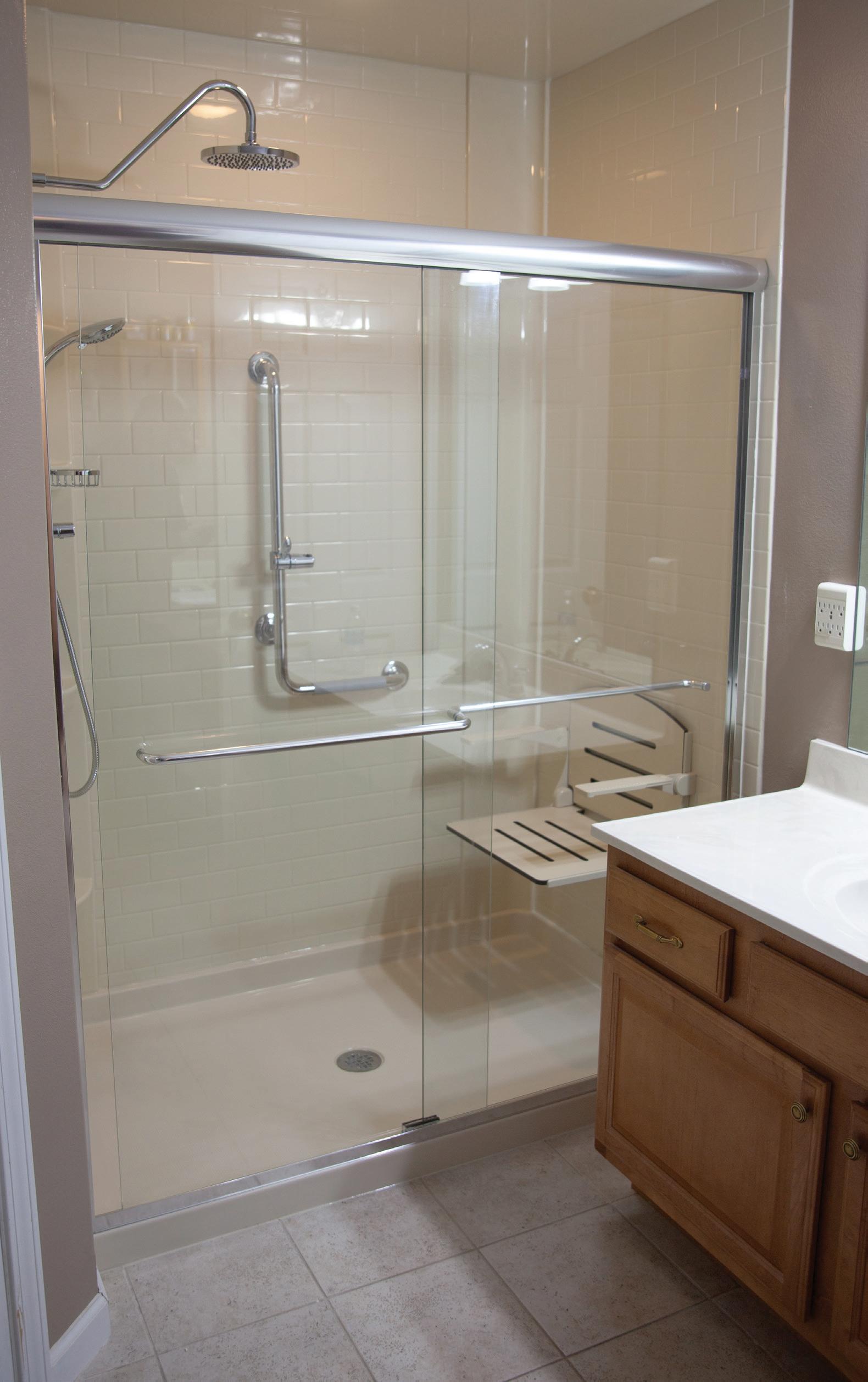



— Gene H.

Switzerland is synonymous with expensive, big-name luxury watches like Rolex®, Piaget® and Patek Philippe® that sell for thousands, but the Stauer Swiss Tactical Watch delivers Swiss precision for a fraction of the cost. Inspired by military timepieces like the American A-11, it combines rugged performance, simplicity, and legendary craftsmanship — built for action, not display cases.
Precision Takes Time
Swiss excellence demands patience. Each Stauer Swiss Tactical takes nearly nine months to complete, and this is a limited edition of 4,900. Crafted by master watchmakers, some of whom have worked with the other prestigious brands, this is your chance to own a rare, precision-engineered tactical watch without the inflated luxury price tag.
Why Pay for a Name?
Big brands charge more for status. Stauer delivers the same quality and precision with high-contrast markers for instant readability, a shock-resistant case to withstand hard knocks and Swiss-made movement for impeccable timing.
Limited Offer – Act Now
Don’t miss this rare combination of Swiss craftsmanship and unbeatable value. Only 4,900 available — once they’re gone, they’re gone.
Why pay more when you can own precision, heritage, and adventure for less? Order now — time is running out.
Watch Specifications:
• Made in Switzerland with precision Swiss Ronda 515 movement. Stainless steel caseback. Brown leather band
• 44 mm diameter case. Date window at 3 o’clock
• Water-resistant to 3 ATM. Fits wrists up to 8 ¼”
Stauer Swiss Tactical Watch
$399 $59* + S & P Save $340
*Special price only for customers using the offer code.
Your Insider Offer Code: SST161-01
By Pam Stevens
Have you ever noticed that your house seems busier in the morning and evening? That’s when most people are using electricity— turning on lights, making breakfast, using the shower, watching TV, charging phones and maybe even running the dishwasher or laundry machines. This is what we call peak demand time.
Blachly-Lane Electric Co-op—your electric utility—doesn’t currently use peak demand billing, but we want you to be informed about it. Let’s break down what peak demand means and why it matters to you, your family and the planet.
What is peak demand pricing?
Most electricity must be made the moment it’s needed. Big amounts of it aren’t easily stored, and power companies must make sure they have the right amount at all times. When everyone uses electricity simultaneously, the demand is high. This is the peak. Peak hours are typically 6-9 a.m. and 4-9 p.m. Since it’s more expensive to produce power during these busy hours, utilities may charge more during those times. That’s peak demand pricing.
Why does this matter?
When we use a lot of electricity during peak times, it puts stress on the electric grid—the system that delivers power to homes and businesses. If too many people use too much energy at once, the grid becomes overloaded. That can lead to blackouts or force utilities to use backup power plants that are more expensive and pollute more.
By using less energy during peak times, we help keep power running smoothly and lower the cost of electricity for everyone. Using less energy during peak demand times also helps reduce pollution to protect the environment and helps co-op members develop habits that save them money on their power bills.
Here are some simple tips that can make a big difference:
• Spread out your energy use. Don’t run the dishwasher and washing machine at the same time.
• Use appliances at night. Many dishwashers have a delay start button so they run while you sleep.
• Do laundry during off-peak times. Try mornings or midday on weekends.
• Switch to LED light bulbs. They use 75% less energy and last a lot longer.
• Charge electronics overnight. Phones, tablets and electric vehicles can be charged when electricity is cheaper and demand is lower.
• Weatherize your home. Add insulation and seal doors/windows to keep your home warm in winter and cool in summer without using extra energy. Blachly-Lane offers cost-reducing energyefficiency rebates for weatherization measures, such as door and window replacements and insulation.
• Upgrade to energy-efficient appliances. These use less power and often work even better than older models. Blachly-Lane also offers rebates for Energy Star-rated clothes washers and dryers.
The U.S. government says that in the next five years, electricity demand is expected to grow so much that it’s like adding another California to the power grid. That’s why it’s important that we all help by using energy wisely.
You might not think flipping a switch or doing laundry later in the day makes a big difference, but it does. If everyone works together, we can protect our power grid, lower costs and help the environment.

Keeping the cost of power down is something Blachly-Lane is concerned about, and something we can all be part of with peak demand pricing. We will keep you informed about any peak demand energy use changes in the future. n
Agriculture
4x5 round bales, Meadow foxtail orchard grass. 4x4 Timothy, small square. 208-435-4637 or 208-435-4002; nas@cpcinternet.com. 1225
Reinforced custom-sized pond liners (39 cents/sqft). Hay covers, greenhouse covers, any width and length. Truck tarps and more. High puncture and tear strength. Best price guaranteed. Celebrating 44 years in business btlliners.com. 541-447-0712. 0426
Irrigation system in NW MT. $15K, OBO. Includes 2 1/4 mile wheel lines, 1,380-ft. mainline w/25 risers; 2,400-ft. handline in 4x3x2-in., handline pipe trailer, 10hp electric motor w/Cornwell pump, 6-valve opener. tlazym82@gmail.com; 907-590-1454. 0525
Buying antiques and collectibles: advertising signs, porcelain signs, gas pumps, beer signs, antique toys, cast-iron coin banks, neon signs and more. Jason, 503-310-3321 or tjabaughman@yahoo.com. 0925
Buying American Indian collectibles, Navajo blankets and rugs, baskets, beadwork, etc. Also, quality paintings of the early Southwest and Americas. Call 760-409-3117 or send photos to amer.ind.baskets@gmail.com. 0625
WC Collectibles. We buy comic books. Local to Inland NW. Willing to travel. 509-496-1835; WCCollectiblesCheney@gmail.com. 0525
Rural collector/historian buying clothing items and accessories from 1860-1915. Hats, shoes, dresses, etc. Also items from Lonerock and Condon, OR. 971-404-8332. 0525
1954 first issue of “Sports Illustrated” and next 9 consecutive issues available to collectors, great condition. Send offer to, sunstar@iinet.com. 0525
Assisted Living Facility
Haven House in Fossil, OR has rooms to rent on a month-to-month basis. 2 bd, $1.2K, 1 bd, $1K; and studio, $800. Lou G., 541-763-4651. 0525
Boats
Aluminum drift boat with trailer. Fish tray, bow and stern anchor system. Composite oars. 14- ft. by 8 in. with 54-in. bottom. Dry box with two seats. Wheeler, OR. $2.7K. 503-530-0315. 0525
Ads 25 words or fewer are $35 a month. An extended ad of up to 35 words is $50 a month. Contact information is included in the word count. Phone numbers and emails count as one word.
Longer ads may be placed. Contact 503-357-2105 or info@pioneer.coop for pricing information.
Ads are for customers of member co-ops, public utility districts and municipals only. Subscribers and nonmembers may inquire about pricing at 503-357-2105 or info@pioneer.coop.
Ads must be direct and in first person, and are subject to approval and editing.
Closing deadlines (in our office): June issue—April 30, 2025.
If submitting ad by mail, send appropriate payment with your name, address, email, phone number and the name of the electric utility that provides your magazine to: Marketplace, P.O. Box 1306, North Plains, OR 97133. Make check or money order payable to Ruralite.
We accept credit card payments for ads submitted by email. Send ad to info@ pioneer.coop.
Advertisements are accepted in good faith. Pioneer Utility Resources is not liable for interactions between buyers and sellers.
Community Events
Art exhibits “Explorations” (Dr. John Lundy) and “Thin Red Thread” (Bayly Lay). May 2-June 28. Art Center East. La Grande, OR. artcentereast.org. 0525
High Desert Music Jamboree at Harney County Fairgrounds in Burns, OR. June 12-14, Oregon Oldtime Fiddlers District 9. 541-573-1323; ootfa.org. 0525
Equipment/Tools
Farmi JL 300 logging winch, small woodlands, $1K. 13 push-pull control cables, $50 each. 60 16-inch nylatron and steel sheaves, 1/2-inch rope, $50 each. 4-ft. towbehinds Land Pride mower, $800. Kubota rototiller, near new, $1.5K. Ted, 458-910-3727. 0625
Seeking ranch lifestyle in retirement? 2-bd, 2-ba home available in Central OR. Heritage ranch. Rent negotiable with handyman discount. Phone calls only, 206-818-9673. 0525
Free materials—When church/government unite, enforcing Sunday Law, the “Mark” of the “Beast” is here. Don’t be deceived, be informed. Leave mailing address only, TBSM, POB 374, Ellijay, GA 30540. 888-211-1715; tbsmads@yahoo.com. 0625AR
The Wheat Land Communities’ Fair in Ritzville is seeking a responsible summer groundskeeper/camp host. Responsibilities include mowing, watering, general maintenance, overseeing the campground and other duties as needed. Would ideally be on-site May through mid-Sept. Full hookup provided. Contact Dan at skamaniadan@gmail.com or mail a letter of interest to: P.O. Box 14, Ritzville, WA 99169.
Dry-land wheat farm looking for skilled worker in field and shop work. Full-time (40plus hours a week with seasonal overtime). Ideal candidates have experience operating/ maintaining heavy equipment related to a dry-land operation. Some on-job training available. Walla Walla, WA. Resume to mike9681@charter.net. 0525
Miscellaneous
3 cemetery plots, Salt Creek Cemetery near Dallas, OR. $1.2K each. Open to offers on all. Message, 503-457-8084. 0625
Foster parents needed to care for teen youth in Wasco and Hood River counties. Agency provides on-call support, training, $2.1K/youth monthly reimbursement, 2 days off/month. Fosterinfo@nextdoorinc.org; 541-308-2207.
Local commercial fisherman sells summer catch of preserved freshness by blast freezing at sea, gourmet canned tuna on internet. Sept.June. 100% guaranteed the best canned tuna you ever tasted. Original, jalapeno and garlic flavors available. To order: twofisherstuna.com or 206-799-1082. 0525
Granite cemetery markers at affordable prices. Will ship to most places. For more info: Joe, highdesertmemorials@gmail.com or 541-815-8906; highdesertmemorials.com.
Looking for that special knife? I hand make custom hunting and fishing knives. I also make other metal and wood crafts. Buckeyeknives.com; 559-212-0693. 0625
Fort Sage Kennels closing. AKC-registered Airedales. Females, 1 year old. Males 2 to 3 years old. 530-827-2271 or 530-249-7896. 0525
Plants
Cactus for sale. Cold/winter hardy. Good for landscaping. Sunnyside/Mabton, WA, area. Local pickup only. 509-391-5546; marybarthlow@gmail.com. 0725
Impressive family home with high-end upgrades on the John Day River. $439K. Duke Warner Realty: ddwr@ortelco.net, 541-987-2363. 0525
320 acres east of Adel, OR. Borders Hart Mountain views, Steens Mountain and Beaty Butte. Landowner tags, very rural. $263K. For maps: thejugglingman3@gmail.com; 541-659-1573. 0525
$180K. 160 acres, proven gold claims. 131 miles north of Fairbanks, AK. 50-yard-per-hour shaker plant. Complete water system. Text, 907-223-3036. 0525
Granite, OR. 3 city lots, 3/4 acre each, one has an off-grid cabin. Year-round activities: hunting, fishing, hiking, skiing, snow-mobiling, 4x4, etc. $200K for all 3. 541-519-9077; billpathanley@gmail.com. 0525
82 acres with Doug Fir (planted 2008) and permitted rock quarry. Approx. 27 miles north of Roseburg, near I-5 exit 150. $2.1M. Lee Real Estate: john@northwestfarmbroker.com; 503-245-9090. 0525
Irrigon, OR. 3-bd, 2-ba. Manufactured home on permanent foundation. Lawn maintenance business with equipment. Huge shop and garage stick-built, unattached. One full city block property. $435K. 541-922-9675. 0625
Southern CA, Riverside County property for sale. 60 acres. I-10 at Joshua Tree exit. Parcel #715300006. $120K cash. Reasonable offers considered. lrehburg@aol.com; 714-349-7981.
Well-established Real Estate Brokerage expanding its team. Specializing in residential, commercial, vacant land, and ranch properties throughout Eastern OR. We’re a smaller brokerage focused on supporting our agents. Michael: Michael.ccp@outlook.com; 541-390-1032. 0525
20 acres buildable land Oakland, OR. Established road, driveway, building pad. Previous septic approval. Zoned agriculture/ wood. Stunning views, varied timber. $419K. Jim, 541-430-7576. 0525
Let me help you buy or sell ranch, farm and recreation property in OR. Fourth-generation Oregonian, prior ranch owner. For sale: Klamath Marsh, OR. 173.65 acres. $2.5M. Guest Ranch Overlay. John Gill, 541-480-9161; johngill@landandwildlife.com. Land and Wildlife brokerage. 0525
10-acre parcel near Denali Park, across from Otto Lake in Healy. Build to suit: lodge, home or rehab cabins on-site. richellekillian@gmail.com. 0525
Awesome view of the Nestucca River, still in tidewater, across from a great fishing hole. Newer, glassed in Trex deck overlooking the river. 2-bd, 2-ba home with knotty pine interior. 2-car garage, plenty of room for kayaks. A short walk to a beautiful beach. $524.9K. steelheadsteven@gmail.com; 503-680-9799. 0525
Recreational Rentals
Oceanfront cottage on the spectacular Central OR Coast. Stunning views, sandy beach. Scoters, spindrift and seals. 2-bd + loft all w/ double beds. Rates and reservations: relax@WaveCatcherbeachrentals.com, wavecatcherbeachrentals.com, 541-740-2846.
Enjoy your ideal Maui getaway. This updated 2-bd, 2-ba condo sleeps 4 and features a charming “surf shack” design. Just half a block from a beautiful beach, it’s perfect for morning strolls and sunsets. Plus, you’re steps away from shops and restaurants at Azeka Plaza. tinyurl.com/MauiGetaway. 0525
Bend country cabin. Very clean and fully furnished cabin on private ranch. Close to recreation areas. Very nice. $95/night. 541-382-3050; bendcountrycabins@gmail.com. 0625
2015 Momentum 380ToyHauler. Garage 9.7x7.9ft. Sleeps 6, center island, pantry, fireplace, 3 slides, Onan generator. Excellent condition. Photos available. $55K. 406-827-0618; shoffland54@gmail.com. 0525
Dawn Till Dusk Masonry. Brick, block, stone and pavers. Small jobs and repairs welcome. dawntillduskconstructionmasonry.com. 541-388-7605; 541-410-6945. License #245760 bonded and insured. La Pine, OR. 0525
Blue Mountain Defensible Space LLC Wildfire Fuel Reduction: clearing brush, thinning trees, animal habitat enhancement. Expert service. Grant money available OR, WA, ID. Bluemountainbrush@gmail.com, 509-399-3473; Bluemountainbrush.com. 0126
Old carpenter tools, planes (wood/metal), levels, chisels, slicks, adzes, axes, hatchets, handsaws, old rulers, spoke shaves, wrenches, shipwright tools, old tool chests. 503-659-0009; 971-666-0659. 0525
Gold, silver, coins/currency, buy, sell. Collections wanted. Fair prices paid. 44 years in retail store. Baker City, OR. 800-556-2133; garrymclin@aol.com. 1025
Buying American Indian collectibles, Navajo blankets and rugs, baskets, beadwork, etc. Also, quality paintings of the early Southwest and Americas. Call 760-409-3117 or send photos to amer.ind.baskets@gmail.com. 0625
Your ad could be here in July. See instructions on Page 26 for details.
Eatonville United Methodist Church A Spiritual Base Camp On The Way To Paradise. Mashell Avenue North P.O. Box 205 Eatonville, WA 98328 360-832-4021
Home: 360-832-4562 Pastor Bernard Preston Ritchea Cell: 361-330-9666
Facebook: Eatonville United Methodist Church of Washington OPEN HEARTS OPEN MINDS OPEN DOORS OPEN TABLE WORSHIP SERVICE BEGINS AT 10:30 a.m.
By NewsData Staff
Hydroelectric dams in the Northwest provide some of the cleanest and most reliable electricity in the country. There’s a lot to know about this time-tested technology that has powered homes and businesses for generations.
Most of the power Northwest electric cooperatives and public power utilities buy from Bonneville Power Administration comes from hydroelectric dams.
“[Hydropower] is the foundation of our affordable energy resources,” says Clark Mather, executive director of Northwest RiverPartners, a nonprofit representing Northwest community-owned electric utilities.
Eight dams in the lower Snake and Columbia rivers—especially the four lower Snake River dams—have been the subject of much debate in recent years.
Let’s explore the myths and facts surrounding these power generation systems.
Hydropower dams in the lower Snake and Columbia rivers are aging and will soon require major investments to maintain.
The lower Snake and Columbia river dams receive consistent maintenance and investment like any other piece of infrastructure, according to the U.S. Army Corps of Engineers’ Northwestern Division, which operates locks, dams and hydropower facilities along the Columbia River.
“The main components of these structures have held up extremely well,” says Tom Conning, U.S. Army Corps of Engineers’ Northwestern Division public affairs specialist. “However, other items— controls, turbines, etc.—wear out over time, just like parts for a car. We are constantly making improvements that help us balance the various needs that each dam supports.”
Another misconception, he says, is that dams have 50-year lifespans. Dams last far longer than 50 years because they are continually maintained and updated.
The four lower Snake River dams provide some of the lowest cost electricity generation in the federal system, Bonneville Power Administration Senior Spokesperson Doug Johnson says. While major investments in these four dams eventually will be needed, the timing and priority are influenced by asset condition and risk. Current forecasts identify major equipment replacement in
the mid-to-late 2030s, BPA says.
Most hydroelectric power generated in the Northwest is sold to California.
Most of BPA’s power is sold to Pacific Northwest utilities, Doug says. BPA has designated more than 6,900 megawatts of federal generation to the approximately 140 consumer-owned utilities in the Northwest that it is statutorily obligated to serve. When BPA has surplus electricity, it must first offer it to other utilities in the Pacific Northwest.
BPA sells surplus generation to California and other parts of the Western Interconnection, the electric grid that covers 11 Western states, two Canadian provinces and a portion of Baja California, Mexico.

Buying power from and selling power to California is mutually beneficial, Clark says. It enables states to rely on each other in times of extreme demand—such as during heat waves or cold spells—that could otherwise cause energy shortages.
The system of locks on the Columbia and Snake rivers is only important to wheat farmers, who could use railroads or trucks instead.
It’s true the Columbia and Snake rivers are the largest wheat export gateways in the United States. But the 360-mile inland navigation system through locks at eight dams from Portland, Oregon, to Lewiston, Idaho, is vital to many businesses in the region and is an efficient form of transport.
Last year, barges moved more than
7.3 million tons of cargo through the rivers’ lock system, says Pacific Northwest Waterways Association Executive Director Neil Maunu.
In addition to wheat, barges move renewable diesel, logs, wood chips, finished paper products, corn, soy, gravel, wind energy components, salmon, scrap steel, jet fuel, gasoline, containers, solid waste and other goods.
The average four-barge tow—one boat pushing four barges—can haul more than 14,000 tons of wheat. The same job would require 538 semi-trucks. In 2020, it would have taken 42,160 rail cars or 162,153 semi-trucks to move the cargo that was barged on the Snake River alone.
Barge transportation is a relatively low source of greenhouse gas emissions per mile-ton of freight compared to using trucks or trains, according to a 2020 environmental impact statement on Columbia River System operations. Without using barges, transportation-related emissions for wheat would increase by up to 53%.
The Columbia and Snake River dams block salmon from migrating upstream and downstream.
Each individual federal dam within the Columbia and lower Snake River system has effective upstream and downstream fish passage systems, Tom says.
Since the dams were built, the agency has significantly improved downstream migration for juvenile fish, often by spilling water—and young salmon—over the tops of the dams.
Adult passage, meanwhile, is quite high. The U.S. Army Corps built the four lower Columbia and the four lower Snake
River dams with fish ladders to help salmon and steelhead safely and effectively migrate upstream.
Improvements continue to be made, including keeping water in the fish ladders cool and enhancing juvenile fish passage.
In 2024, almost 1.8 million adult salmon and steelhead passed Bonneville Dam—the first Columbia River dam encountered in their upstream migration. This is the highest total return in nine years, and the fourth highest since the dam was built in 1938.
After passing Bonneville Dam, some fish are caught by anglers, eaten by predators or travel into tributaries. Many others continue their journeys upstream.
In 2024, more than 530,000 salmon and steelhead passed nine dams on the mainstem Columbia River, and more than 209,000 passed eight dams to reach tributaries, spawning areas or hatcheries where they produce offspring for future generations.
The lower Snake River dams can be replaced by wind and solar power without significant costs to energy consumers.
Hydropower is an alwaysavailable energy source. Replacing all of the generation with other renewable energy sources would raise costs and lower reliability.
Wind and solar energy are intermittent sources of generation. They don’t produce power when the wind isn’t blowing or the sun isn’t shining. On top of the cost of building new wind and solar generation to replace existing power sources is the cost of additional backup generation.
Benton County PUD General Manager
Rick Dunn, who writes about the clean energy transition on Substack, says wind and solar generation rely on large amounts of minerals, such as copper. Large-scale mining activities are needed to support the growth in wind and solar, he says.
Energy and Environmental Economics, an energy consulting firm, found that replacing the four lower Snake River dams with a combination of wind, solar, battery storage and one emerging technology— such as longer lasting batteries—would increase BPA’s wholesale power rates 8% to 18%, or $100 to $230 a year per enduse ratepayer. If the energy produced by the dams was replaced with energy from just wind, solar and battery storage, the increase would be 34% to 65%, or $450 to $850 a year per end-use ratepayer.

Replacement resources—if they include one new technology—could cost $11.2 billion to $19.6 billion. Those costs increase to between $42 billion and $77 billion if no new combustion generation resources are used.
Hydropower generation is a major benefit to people who live in the Northwest. Dams bring many other benefits to the region, including flood control, irrigation water, river transportation and recreation.
By understanding the facts, energy consumers remain informed about the systems in place to maintain, improve and protect the region’s renewable and reliable energy resources. n
Founded in 1982, NewsData provides a common frame of reference for thousands of energy professionals, keeping them well-informed on Western energy policy, markets, resources and other topics essential to their work.
PHOTO BY MITCHELL WALLACE
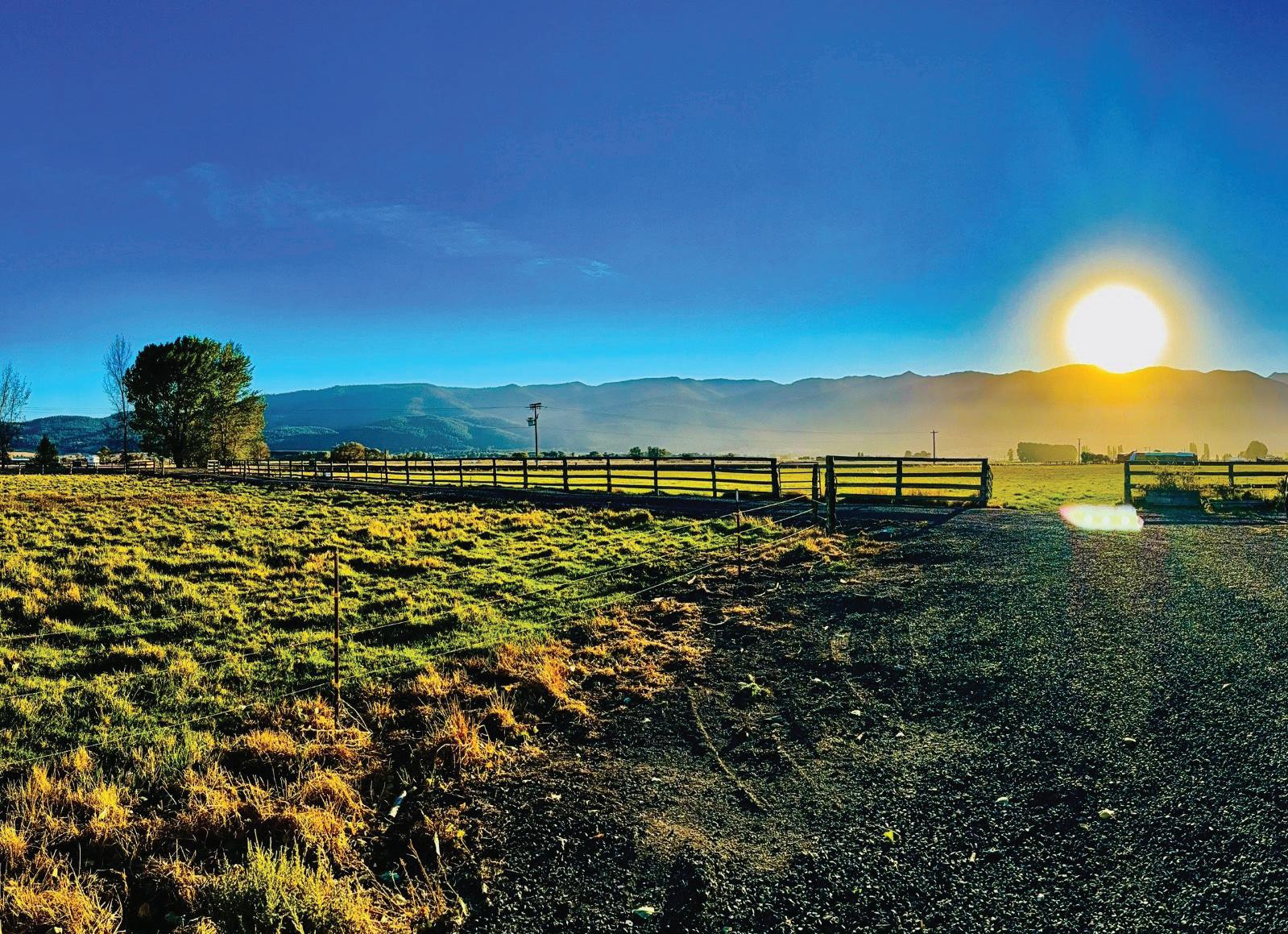
Highlighting the beauty all around him, Mitchell Wallace captures the sun as it peeks over a hill on a ranch in Baker City, Oregon.
To submit your photo, email a JPEG to photos@pioneer.coop. Include “Before You Go” in the subject line and share a bit about what inspired you to make your photo. n




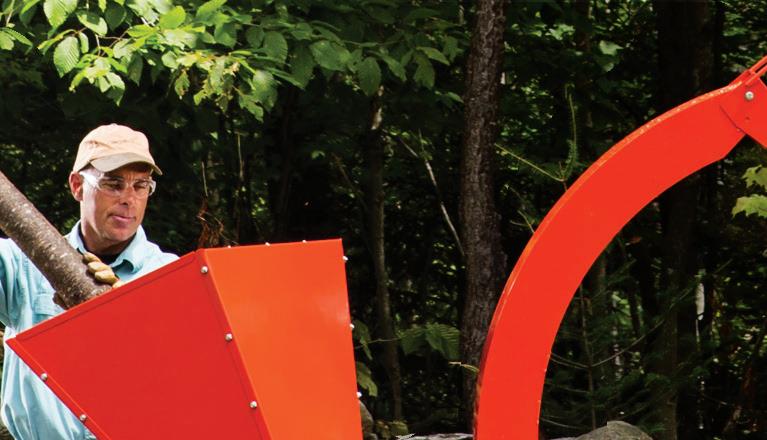





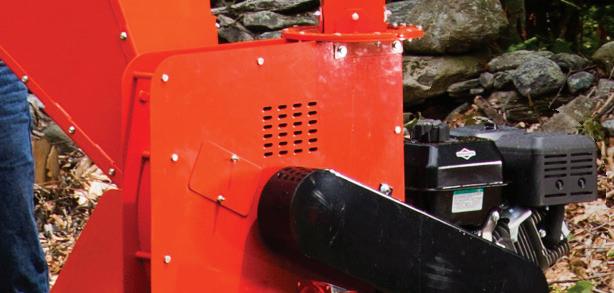





























































































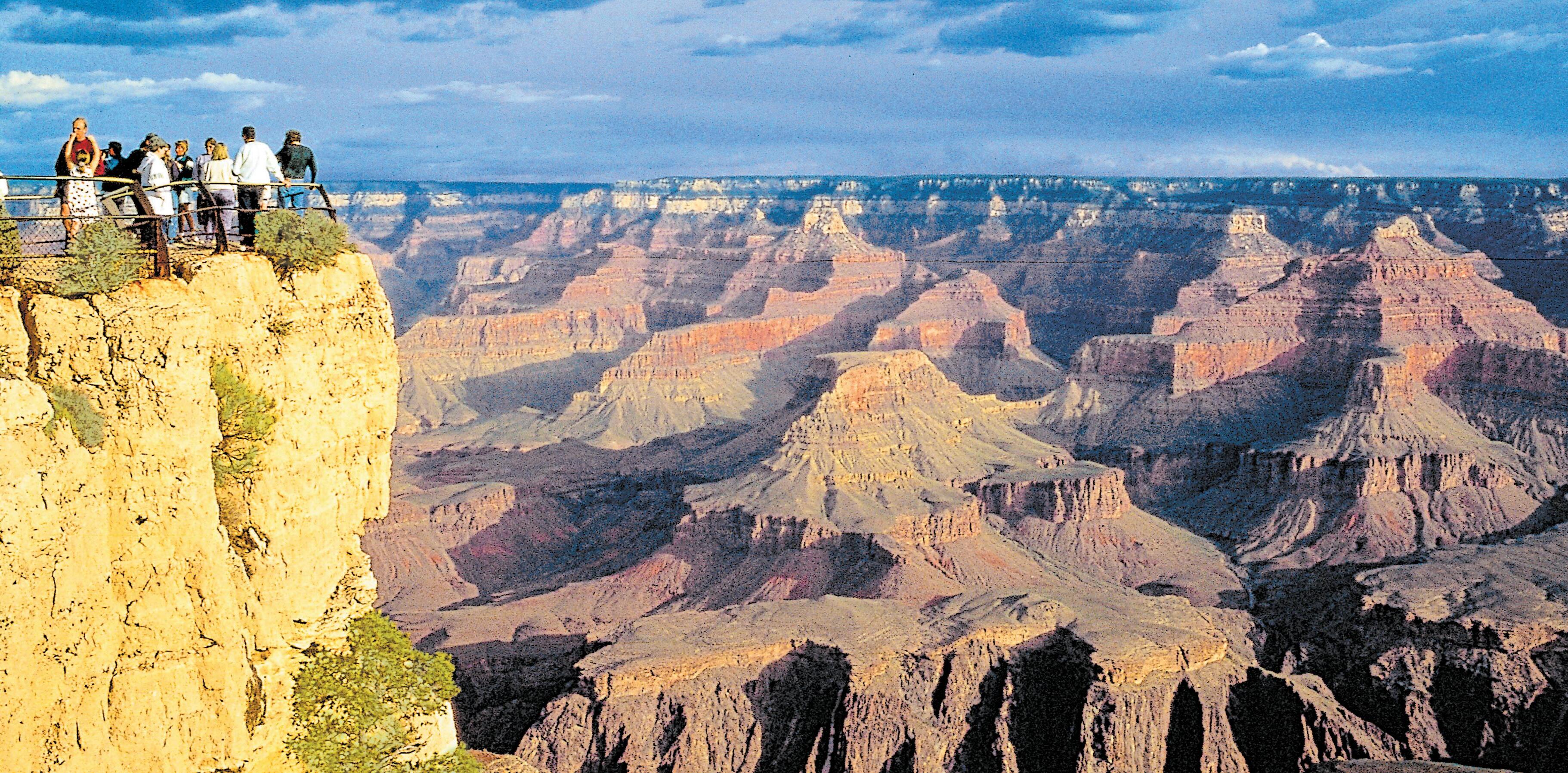

the greatest national parks of America’s Southwest!—Book now for choice dates: Caravan.com,
Welcome to a great vacation at an affordable price. These quality tours feature complete sightseeing, professional Tour Directors, and great itineraries. Discover for yourself why smart shoppers and experienced travelers have chosen Caravan Tours since 1952.
See the greatest national parks of America’s Southwest! You’ll enjoy 2 nights in national park lodges near the South Rim of the Grand Canyon, 2 nights at Lake Powell Resort, and 2 nights near Zion National Park.
The #1 in value. Your Grand Canyon, Bryce & Zion tour is fully guided with all hotels, activities, and some meals. You’ll explore Grand Canyon, Bryce, Zion, Lake Powell, Monument Valley, Antelope Slot Canyon, Sedona, and more!—Book now for choice dates:

Scan for Grand Canyon, Bryce & Zion 8-Day Tour $2195
Enjoy complete sightseeing with more visits, extra features, and local guides. Caravan includes all activities listed in the tour itinerary. Caravan does not sell any optional activities which can add hundreds of dollars to your tour price. Your free time is scheduled in great settings where there is no need to buy additional expensive activities.
Our 73rd year of excellence. Caravan has operated fully guided tours of superb value under the same family management and ownership since 1952.
“Brilliant, Affordable Pricing”
Arthur Frommer, Travel Editor
Blachly-Lane Electric Cooperative
90680 Highway 99 N. Eugene, OR 97402
541-688-8711
800-446-8418
blec@blec.coop blachlylane.coop
Our Mission: To make continuous and practical improvements in our quest to provide safe, reliable electric service to our community of members.
Board of Directors
District 1
Ernie Jacksch, Secretary/Treasurer 541-927-3466
District1Director@blec.coop
District 2
Kelly Harpole 541-729-0104
District2Director@blec.coop
District 3
Beverly Mattheisen, Chairwoman 541-998-3704
District3Director@blec.coop
District 4
Mary Ann Rhodes, Vice Chairwoman 541-998-2630
District4Director@blec.coop
District 5
Eric Imbler, Director 541-954-1949
District5Director@blec.coop
General Manager
Jeff Jones jonesj@blachlylane.coop
OR-17
Dear Member,
Thank you to everyone who joined us for the 2025 Blachly-Lane Annual Meeting in April. We’re so glad you attended—whether in person or virtually—and we truly appreciate your time, interest and support. Events like these are a big part of what makes our electric cooperative special. As a member-owned co-op, your voice matters, and your involvement helps guide our future.
This year, we saw great participation in the bylaw vote and board member elections. Thank you for taking the time to read through the nine proposed changes and cast your vote. Every vote helps us make sure we are working in the best interest of all members.
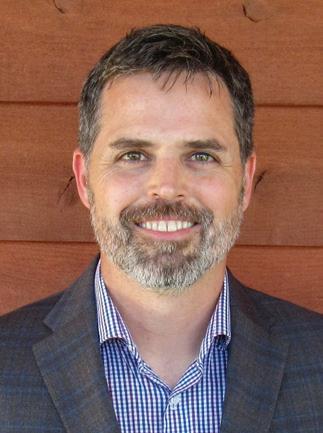
Choosing board members is also an important part of how you help lead our co-op. Your choices help us continue to grow in a way that reflects the values and needs of our community. The results of the election are available at blachlylane.coop.
We also want to share an exciting update about our Member Appreciation Day. In the past, this event has been held in October. This year, we’re trying something new. Member Appreciation Day will be in July. We’re always looking for new and better ways to connect with our members and show our appreciation. Changing to a summer event is just one example of how we’re working to build stronger relationships and create meaningful experiences for everyone in our co-op family. More details are coming soon, so keep an eye out for updates in Ruralite, on our website and on Facebook.
Be sure and check out Pages 28 and 29 in this Ruralite issue. Our Columbia Basin rivers, and more precisely the clean, available hydropower they provide our region, remain a top issue for your leadership as we navigate the rapidly growing need for energy sources. This article underscores the value this hydropower source brings us here in the Northwest.
As always, thank you for your trust and support. We’re all working together to keep the lights on, improve our communities and shape a brighter future.
We’re proud to serve you, and we look forward to seeing you in July.
Sincerely,
Jeff Jones General Manager
The board approved the following action items:
h A motion to accept option C for the Established Rates for 2025 was accepted, 4-1.
h The board reviewed and approved various cooperative expenses.
h The updated 2025 bylaw amendment proposals, incorporating the suggested edits from the January board meeting, were accepted as amended, 5-0.
Monthly Policy Review
h Policy 1105 Director’s Duties and Standards of Conduct was accepted as presented, 5-0.
h Policy 1115 Board of Directors Election was accepted as amended, 5-0.